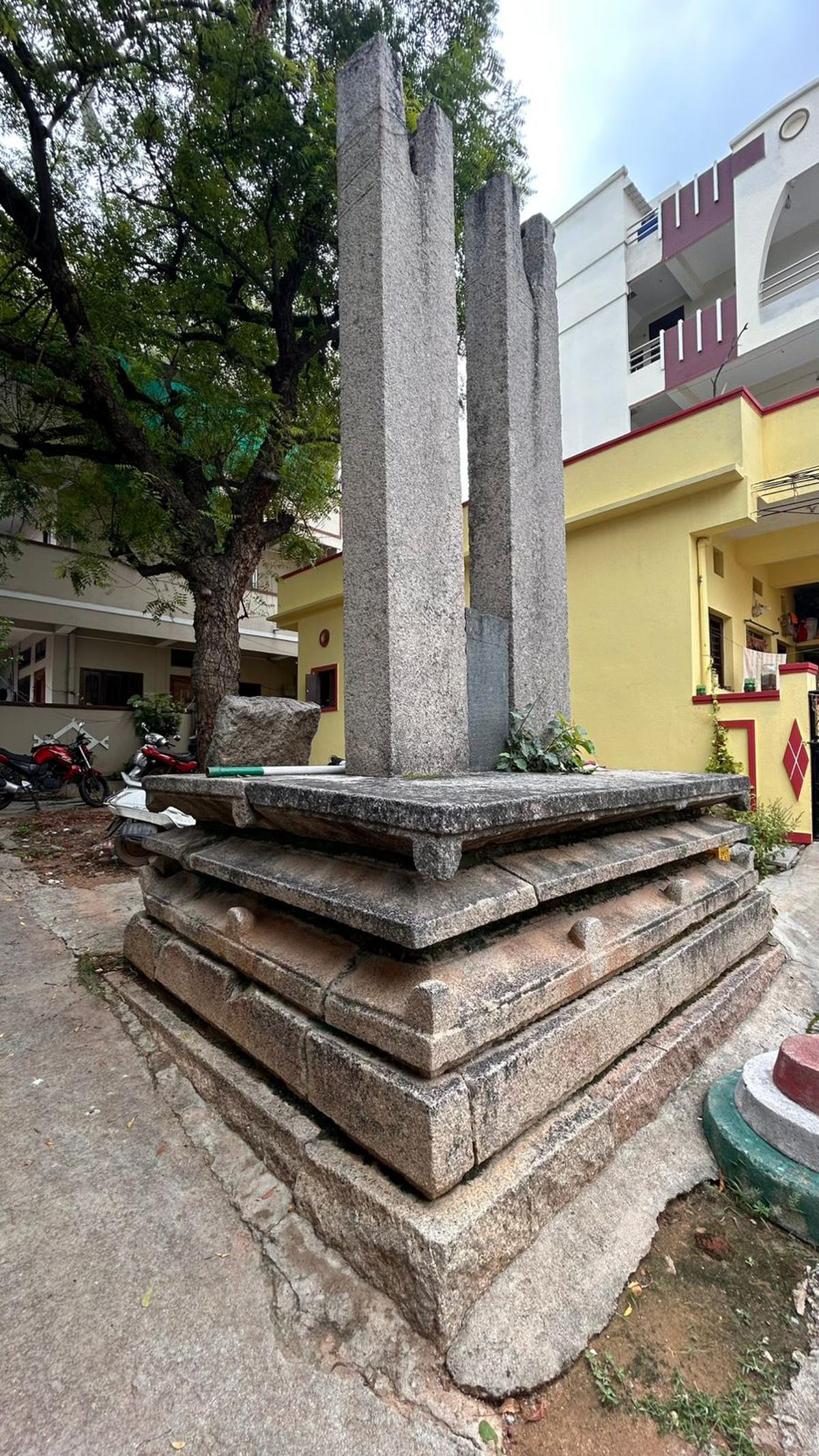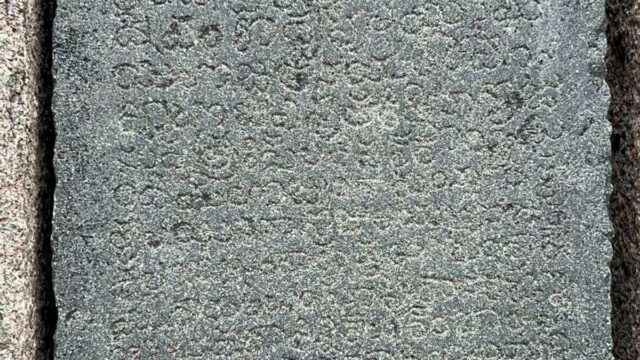
An inscription from 1418 throws throws light on what could be perhaps the first reference to Telangana etched in stone, and that Tellapur was a part of the Bahmani Sultanate of Gulbarga.
| Photo Credit: Syed Mohammed
An over 600-year old stone inscription, located in an unassuming corner of Tellapur, on the outskirts of Hyderabad, may contain the earliest known reference to the name Telangana etched in stone. The tablet, in Telugu, which continues to be legible, mentions Telanganapura, the name from which the region, and later the State, appears to have derived present name.
A drive through the wide roads and roundabouts of the Financial District, past clusters of high-rises, brings one to a quiet Tellapur neighbourhood. Here, time seems to slow down. The air carries the trace of a village long subsumed by a city founded over four centuries ago, and now a metropolis. A Pochamma temple stands on one side. It is accompanied by a sculpture of a snake pit coiled by a cobra. Opposite is a graveyard with a green wicket gate. A paved path leads to a few graves. While some burials are as recent as last year, unmarked resting places hint at antiquated origins.

An inscription from 1418 throws throws light on what could be perhaps the first reference to Telangana etched in stone, and that Tellapur was a part of the Bahmani Sultanate of Gulbarga.
| Photo Credit:
Syed Mohammed
The graveyard is named after Habeeb Hasan Habshi, presumably of African origin — people from that continent were not uncommon in the Deccan. Malik Ambar, founder of Khidki, later Aurangabad, now Sambhaji Nagar, was among the most prominent Habshis. Though the tomb appears recent, a more compelling feature lies nearby. A few metres from both temple and qabristan, cloistered among homes and hidden from view, rise two monoliths that gently taper at the top. At their base rests the inscription. It is weathered but still legible.
Sibghat Khan, from the Deccan Archive — an organisation researching the history of the region — points out that the inscription may be the first to mention the word Telangana in stone. “The inscription is dated January 8, 1418, and is part of the tradition of digging wells to supply water to villages and recording the details on stone slabs,” Mr. Khan told The Hindu.
The inscription, he says, stated that the well was dug during the reign of Bahmani Sultan Firuz Shah Bahmani, whose capital was in Gulbarga. The king’s entourage had stopped at the village of Telunganapuram, which was later corrupted to Tellapur, on its way to the fort of Panagal in Telangana, he explains. “At the top appears to be a crescent, and the sun. The inscription lists the names of those responsible for digging the well, as well as the scribe. I first came across mention of it in the book Inscriptions of Andhra Pradesh. It was fascinating to find a Bahmani-era inscription in Hyderabad, and in Telugu,” Mr. Khan adds.
A study of a document connected to the inscription indicates that the Telangana region formed part of the Bahmani dominions. It also identifies one of the artisans, a man named Nagoju, who is also said to have crafted gold ornaments for the Sultan’s wife. The name of the scribe is recorded as Rudroju Sirigiroju.
Published – June 14, 2025 08:11 pm IST







